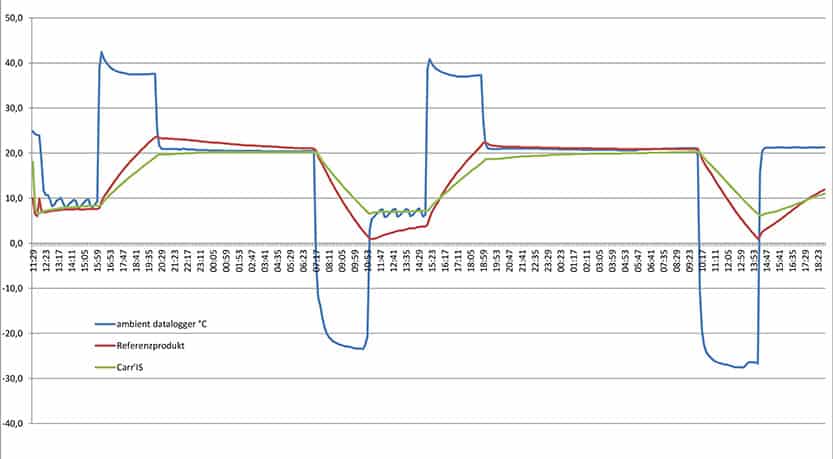Challenges of temperature controlled logistics
Temperature controlled logistics are inherently complex operations with many stakeholders and parties involved. Sudden temperature changes can impair the effectiveness of the pharmaceutical product, or worse, negatively affect the end-consumer, which can lead to lawsuits and reputational damage.
Risk management aims to account for all deciding factors such as route, climate zones, product requirements, interfaces, storage solutions or unforeseen events like strikes, weather anomalies and human failure.
Luckily the market offers a wide range of active and passive TCP solutions to choose from.
Active vs. passive temperature-controlled packaging (TCP) solutions
The decision between active and passive packaging solutions really comes down to the budget and specific risk profile of the product—is it a reoccurring shipment with ambient temperature or some newly developed pharmaceutical on the way to launch in a new market?
Active packaging is generally regarded as very safe and can hold certain temperature ranges without significant deviations. The downsides are high and fixed prices per unit, demand for energy or dry ice and specific infrastructure and handling procedures are therefore not always viable.
Passive packaging such as insulating foils, on the other hand, is a cheap alternative without the need for specific handling procedures, which in turn, opens up the possibility to choose from a wider range of routes or subcontractors.
Passive TCP are optimal for controlled room temperatures (CRT) or as general protection for shipments with a low-risk profile.
” Almost 51% of temperature-controlled shipments fall into the range of +15°C to +25°C. This makes it the second most common category for temperature-controlled storage. Making it the most widely used temperature range.”
A closer look a Carr’IS©
Unfortunately, most commercially available and widely used solutions did not meet the quality standards of CARRYMED and showed significant temperature deviations when exposed to sudden temperature changes; therefore, CARRYMED developed its own proprietary thermal foil.
The thermal foil is composed of 12 layers of different materials for insulating effects and has a highly reflective surface to especially protect against sudden temperature changes during air transport such as exposure to the environment during loading of the aircraft on the tarmac.
Several tests have been performed prior to usage for sensitive products.
Carr’IS© Test Results
Test Setup I:
Temperature decrease from +20°C to +2°C.
Reference Product: 162 min
Carr’IS©: 300 min
Temperature increase from +8°C to +25°C.
Reference Product: 238 min
Carr’IS©: 430 min
Test Setup II:
The ambient conditions during test run were +35°C and -20°C, each time 4h duration in order to be comparably safe. Reconditioning to 5°C for summer and +20°C for winter transports. Runs were repeated several times.

Summary
On average Carr’IS© is 72% safer than the reference product and can be exposed 72% longer to unfavorable ambient conditions until the product reaches the limit.
Additionally, Carr’IS© allows for the transport of 8 EUR-pallets on a single aircraft pallet, due to an innovative engineering solution, while protecting the whole shipment against temperature deviations.
This directly leads to cheaper per unit shipping costs and fewer trips.
Get in touch to learn how we set up transport lanes and actively manage shipments based on dynamic risk assessment.




